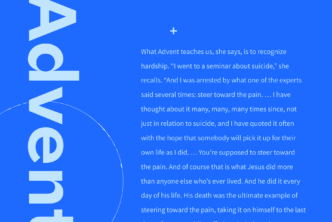Recently, I read Radical: Taking Back Your Faith from the American Dream by David Platt in print. It’s a quick read, but in 231 pages, Platt makes 177 references to Scripture and 15 references to other works—in the endnotes. In popular Christian works, it’s common practice to reference Scripture this way—the extra information is available to the reader, but it doesn’t interrupt the train of thought like an inline quote. However, this means that even if I’m reading with Bible in hand, I have to flip to the end of the book and look up the endnote before I flip through my Bible.
As a reader, this leaves me with a choice: abandon the extra information and supporting Scripture, or potentially take twice as long to read the book. If you’re like me and you have a backlog of books or a busy schedule, you choose to miss out on deeper study.
While you might be saving time by skipping the nearly 200 references to additional materials, you’re missing out on a wealth of information. If you’re reading for spiritual formation, you don’t want to miss out on the potential insights in your endnotes.
I followed up reading David Platt with Radically Normal: You Don’t Have to Live Crazy to Follow Jesus by Josh Kelley. While Kelley’s endnotes weren’t populated with Scripture references, he frequently plants a Bible reference in the middle or end of a sentence, without providing the text. This method is perhaps even more popular in Christian books than endnotes, but it can be equally frustrating as a reader. If I don’t have a Bible on hand, I’m left wondering what that passage just said, while the author is asking me to continue reading.
Christian authors point to Scripture constantly, and in print, you often wind up with either a book full of entire Bible verses, or a Scripture scavenger hunt. That’s where technology comes in.
Here’s what changes when you read popular Christian books in Logos or Faithlife Ebooks. . . .
Inline Scripture references bring the verses to you (instead of asking you to hunt them down).
Footnotes and endnotes connect across the pages, so you can tap into that wealth of information with a move of your mouse—without leaving the page.
You can also read these texts alongside your preferred Bible, Bible dictionary, or thousands of other books that help you dig into Scripture and continue the conversation.
If you want to get the most out of your books and your time, there’s no substitute for reading books in Logos or Faithlife Ebooks. Start building your digital library today. Get the Logos Bible app or browse thousands of popular Christian titles on Faithlife Ebooks.




